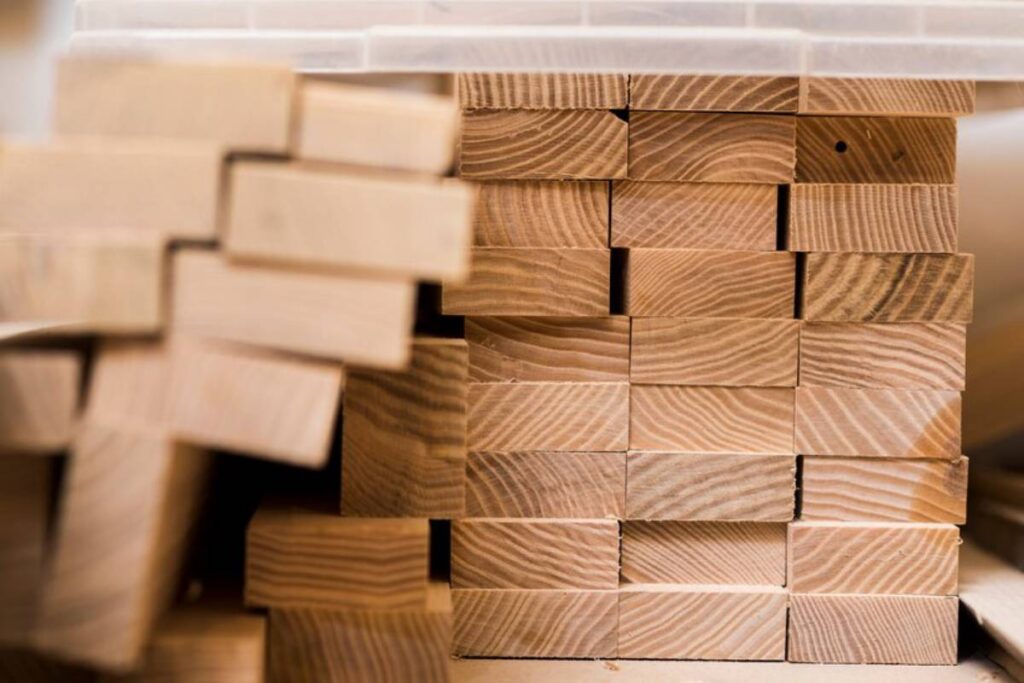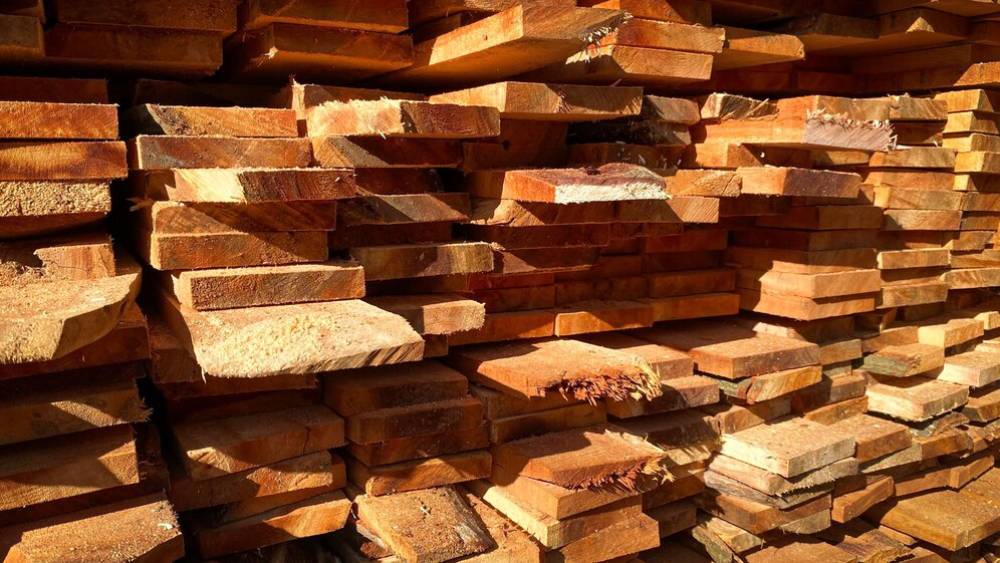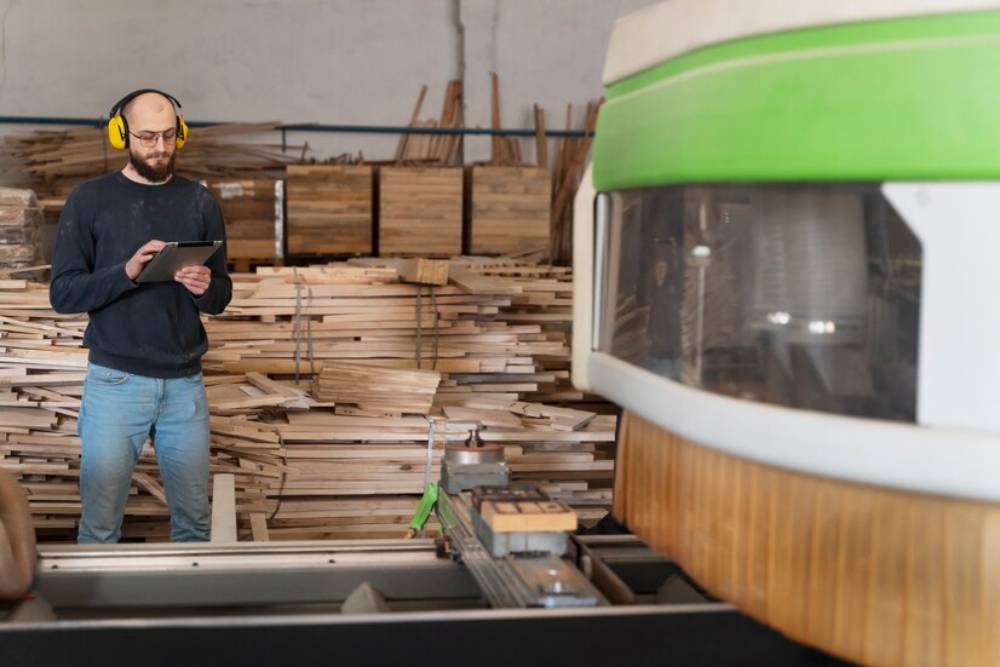The DIY & Crafts Blog

Safe Wood Storage Tips to Maintain Quality
Why Proper Wood Storage Matters
For anyone working with wood—whether you’re a seasoned craftsman, a DIY enthusiast, or just dipping your toes into woodworking—knowing how to store your timber is absolutely essential. Poor storage conditions can lead to warping, cracking, mould growth, and degradation of the wood’s structural integrity. This can ruin even the best-quality timber and derail your project before it begins.
In this guide, we’ll delve into wood storage tips that not only preserve the quality of your materials but also enhance overall woodworking safety. We’ll explore the importance of moisture control, organisation techniques, and storage environments for various wood types. Whether you’re stocking up on exotic hardwoods or keeping pine boards for general use, these practical and easy-to-follow strategies will help you protect your investment.
Let’s dive into how you can store your wood smartly and safely.
Understanding Wood and Its Environment

Why Wood is Sensitive to Storage Conditions
Wood is hygroscopic—it absorbs and releases moisture based on its surroundings. This means that fluctuations in temperature and humidity can cause wood to expand or contract, leading to warping, cupping, or splitting.
Key issues caused by improper storage include:
- Warping: Curvature of the wood due to uneven drying
- Cracking/Splitting: Often the result of overly dry environments
- Mould and Mildew: Caused by high humidity or poor airflow
- Infestation: Insects like termites thrive in unmonitored environments
Factors Influencing Storage Needs
Different woods have different sensitivities:
- Softwoods like pine dry quicker but are more prone to warping
- Hardwoods such as oak and walnut are denser and require slower, controlled drying
Also consider the form:
- Rough-sawn lumber is less processed and needs extra care
- Plywood and MDF are vulnerable to moisture damage
Indoor vs Outdoor Wood Storage
Benefits of Indoor Storage
Indoor environments provide a more stable climate for storing wood, reducing the risks associated with moisture and pests.
Best practices for indoor wood storage:
- Store wood in a well-ventilated, dry area
- Avoid direct sunlight
- Maintain a stable room temperature and humidity (ideally around 30%-50% humidity)
- Elevate wood from the floor to prevent ground moisture contact
Outdoor Storage Done Right
If indoor space is limited, outdoor storage is still viable with the right precautions:
- Use tarpaulin or plastic sheeting to cover the wood, but allow airflow
- Elevate wood using pallets or blocks
- Stack wood loosely to promote air circulation
- Orient boards with airflow direction for more even drying
- Protect against UV exposure with shade or covers
How to Stack and Organise Wood Safely

Flat Stacking Techniques
Flat stacking is ideal for long-term storage:
- Place the wood on stickers (small, uniform spacers) between each layer
- Keep stacks level and evenly weighted
- Heavier wood should be stored on the bottom layers
Vertical Storage Methods
Shorter offcuts or smaller pieces may be stored vertically:
- Ensure the area is dry and stable
- Use wall racks to keep pieces upright and separated
- Avoid stacking too high to reduce toppling risk
Labelling and Sorting for Efficiency
Organisation isn’t just about neatness; it’s a safety tool too:
- Label woods by species, thickness, and length
- Use colour codes or tags for quick identification
- Store like woods together to streamline project planning
Climate Control and Moisture Management
Why Moisture Content Matters
The ideal moisture content for indoor woodworking is typically 6-8%, while wood stored outdoors may remain closer to 12-15%. A moisture meter can help ensure your wood is within usable range.
Controlling Moisture Indoors
Simple steps to maintain indoor moisture levels:
- Use a dehumidifier in humid environments
- Install a hygrometer to monitor relative humidity
- Avoid placing wood near vents, heaters, or windows
Adapting to Seasonal Changes
Wood acclimatisation is crucial. If you move wood from one environment to another:
- Let it sit for 7-14 days to adjust before working on it
- Stack it with spacers to promote even moisture adjustment
Special Considerations for Finished and Exotic Woods
Finished Wood Storage
Finished wood, such as stained or sealed boards, still reacts to environmental factors:
- Store in clean, dust-free areas
- Avoid stacking directly against each other to prevent surface scratches
Caring for Exotic Hardwoods
Exotics like teak, mahogany, and rosewood need extra care:
- Store in cool, shaded indoor environments
- Monitor regularly for signs of cracking or insect activity
- Maintain consistent humidity to avoid checking (surface cracking)
Safety Best Practices in Wood Storage
Avoiding Physical Hazards
Improper stacking can lead to injury:
- Don’t stack wood too high or unstable
- Use brackets or racks to keep stacks in place
- Clearly mark aisles and walking paths
Fire Prevention Measures
Wood is combustible, so safety is essential:
- Keep away from heat sources and electrical panels
- Install smoke detectors near storage areas
- Don’t use flammable finishes in unventilated storage areas
Pest Control Measures
- Use cedar chips or insect deterrents near storage areas
- Seal off gaps in outdoor sheds to prevent entry
- Regularly inspect wood for boreholes, frass (wood powder), or insect presence
How Wood Storage Affects Your Projects

Maintaining Quality for Precise Work
Good storage ensures your wood is flat, stable, and ready to use:
- Reduces project errors from warped boards
- Improves joinery accuracy
- Enhances finish quality
Saving Money and Time
Proper storage means fewer surprises:
- Less waste due to ruined boards
- Fewer delays in acclimating or replacing wood
- More predictable results when milling and shaping
Enhancing Workshop Workflow
Organised wood storage improves your efficiency:
- Easier material selection
- Faster setup and breakdown for each project
- Safer, cleaner workspace
Building DIY Wood Storage Racks
Creating your own storage can be a rewarding DIY project.
Basic Horizontal Rack Plan:
- Use strong brackets mounted on wall studs
- Add 2-3 layers for different board lengths
- Include sticker supports for airflow
Mobile Wood Cart Idea:
- Ideal for small shops or garages
- Use locking wheels for stability
- Build sections for both long and shortcuts
Overhead Storage Solution:
- Utilise ceiling rafters for longboard storage
- Keep infrequently used wood up high
- Use pulley systems for safer access
Conclusion: Store Smart, Work Safe
Storing your wood properly is about more than just tidiness. It protects your materials, enhances DIY material care, and ensures your workshop remains a safe, productive environment. By following the storage tips outlined here, you can extend the life of your timber, reduce waste, and improve the quality of your woodworking projects.
From moisture control to stacking techniques and safety considerations, every small habit contributes to big gains in efficiency and craftsmanship.
Now it’s your turn. Take stock of your current setup and ask yourself: Could it be safer, smarter, or better organised? A few adjustments today can save you time, money, and effort tomorrow.
Ready to take your woodworking to the next level? Explore our expert guides, or subscribe for weekly tips on safety, tools, and workshop success.









